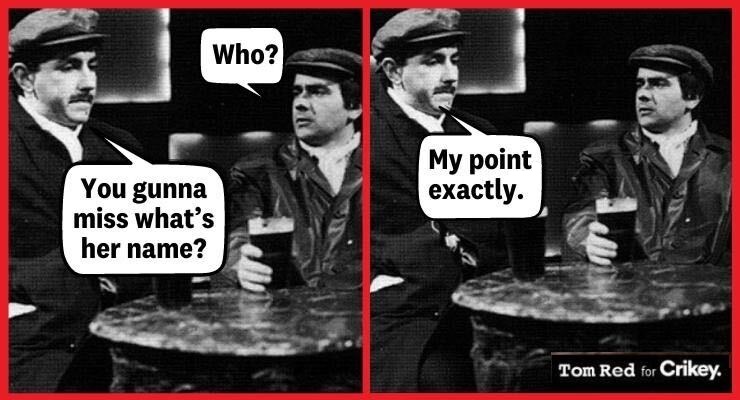
UK prime minister Liz Truss yesterday became an outgoing PM when she resigned as Conservative Party leader after just 45 days in office. But the loss came with a win — Truss trumped George Canning’s 119 days in 1827 to claim the title of UK’s shortest-serving PM.
The turbulence has come to define UK politics, but it is not a uniquely British phenomenon. To set the record straight, Crikey has drawn up a global leaderboard of PM-be-nimble, PM-be-quick.
In Australia, the shortest stints in office were all caretaker PMs.
Frank Forde sat in the seat for a mere eight days in 1945, Sir Earle Page managed 19 in 1939, and John McEwen got 22 in 1967-68 (which still managed to span two years!). All enjoyed a short time in office following the deaths of elected PMs. In 1941, Arthur Fadden landed 40 days in the top job, padding out the time between Sir Robert Menzies and John Curtin.
The shortest term of a PM that lost the confidence of his government was Labor’s Chris Watson, who enjoyed 113 days as a champagne socialist in 1904 before being booted. He still retains the title of Australia’s youngest PM at the age of 37 when elected.
Japan claims four exceptionally short and sweet tenures in the postwar period — fewer than 70 days — with Prince Naruhiko Higashikuni taking home the title of racy-ist PM. The imperial prince lasted 54 days as Japan’s 30th PM in 1945, resigning after he failed to see eye to eye with US occupation forces.
Sickness took Tanzan Ishibashi in 1957 after 65 days and a change of government prematurely wrested power from Tsutomu Hata in 1994 after 64 days, but Sōsuke Uno’s speedy departure in 1989 after 69 days was owing to a scandal in which he was accused of shirking tradition and underpaying geisha Mitsuko Nakanishi during their four-month affair.
Canada has three PMs that took on the title but never got to play the role in Parliament: Sir Charles Tupper (69 days), John Turner (79 days), and Kim Campbell (132 days). Turner in the 1980s and Campbell in the 1990s lost their PM privileges after calling and then proceeding to lose elections. Campbell even lost her own seat in the process. Tupper’s exit around a century earlier was slightly less gracious, with cabinet calling time after his (mis)handling of the Manitoba Schools Question — a controversy that roped language, religion and education under one roof.
Please pardon the presidential drop in a field of PMs, but history shows that the US has a much greater ability to keep a stable government (or much less ability to boot out problematic leaders). Its shortest-serving president was William Henry Harrison in 1841, who died 31 days into his term. Next in line was James A Garfield in the same century, who also met his demise (by assassination) after 199 days. Everyone else in the top job has been in for the long haul.
Crikey’s global sweep is not exhaustive, but Truss is right up the top of the touch-and-go leadership game. She may not have delivered as the UK’s PM, but she has tactfully found ways by which her name can live on.








Patrice Lumumba
Charismatic nationalist and leader of the non-aligned movement in Africa
1st democratically elected prime mininster of the Republic of the Congo
24 June – 5 September 1960
On 26 August 1960, Allen Dulles, the director of the CIA, wrote: “If Lumumba continues to be in power, the result will be at best chaos and at worst an eventual seizure of power by the communists, with disastrous consequences for the prestige of the UN and the interests of the free world. His dismissal must therefore be an urgent and priority objective”.
Both French third republic and post-war Italy were famous for their turnover of PMs. Perhaps they could feature in a follow-up to this article.
There is even a joke that after an all-night sitting of one of the more unstable French parliaments, an MP woke up and was told that he had twice been elcted PM while he was asleep, but on both occasions he lost a vote of confidence before anyone could wake him up!
Canning’s record was to die for.
for the younger readers, an explanation re the image leading this article
https://en.wikipedia.org/wiki/Pete_and_Dud
Pete and Dud, Hacker and Sir Humphrey, Clark and Dawe. How I miss them.
For the older readers, a quote from Joh Bjelke-Peterson’s press secretary, Allen Callaghan
“I’ll never forget whats-his-name!”
Not only did Truss beat Canning’s record, but she lived to tell the tale; Canning’s time as PM was terminated when he died.
Canning lasted more than twice as long as Truss. He died in office after a premiership of 119 days.